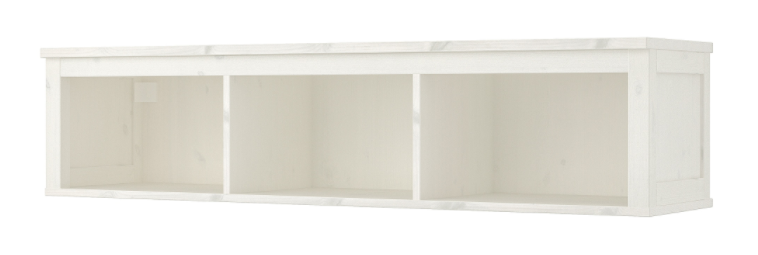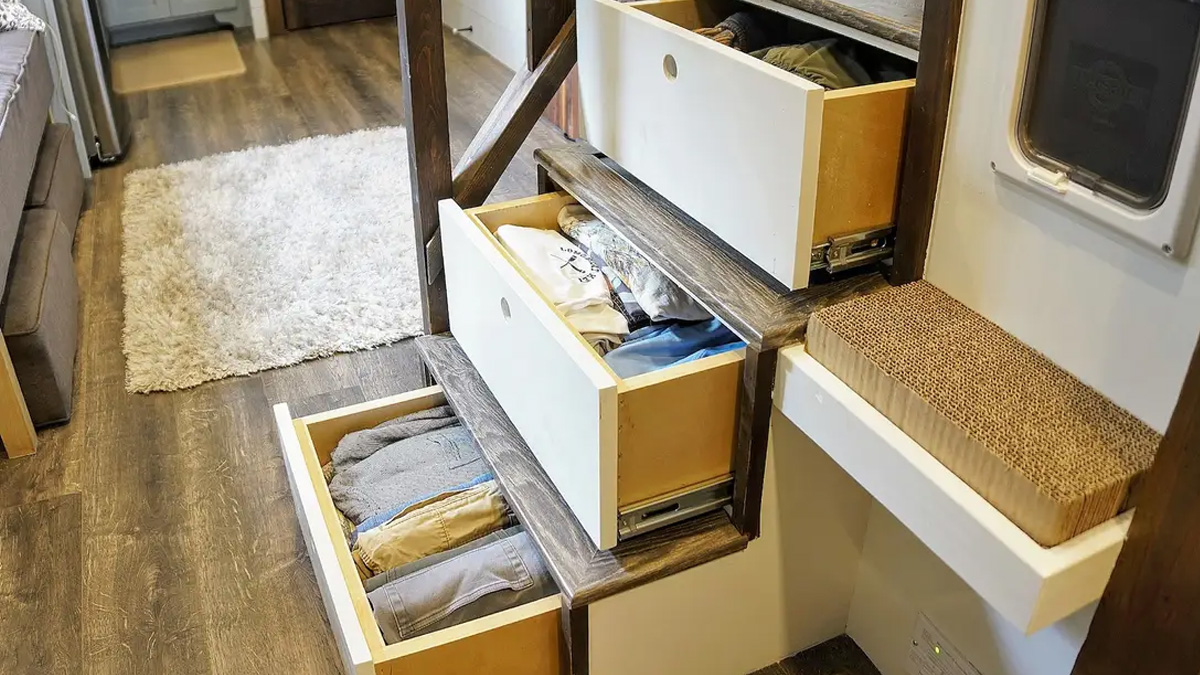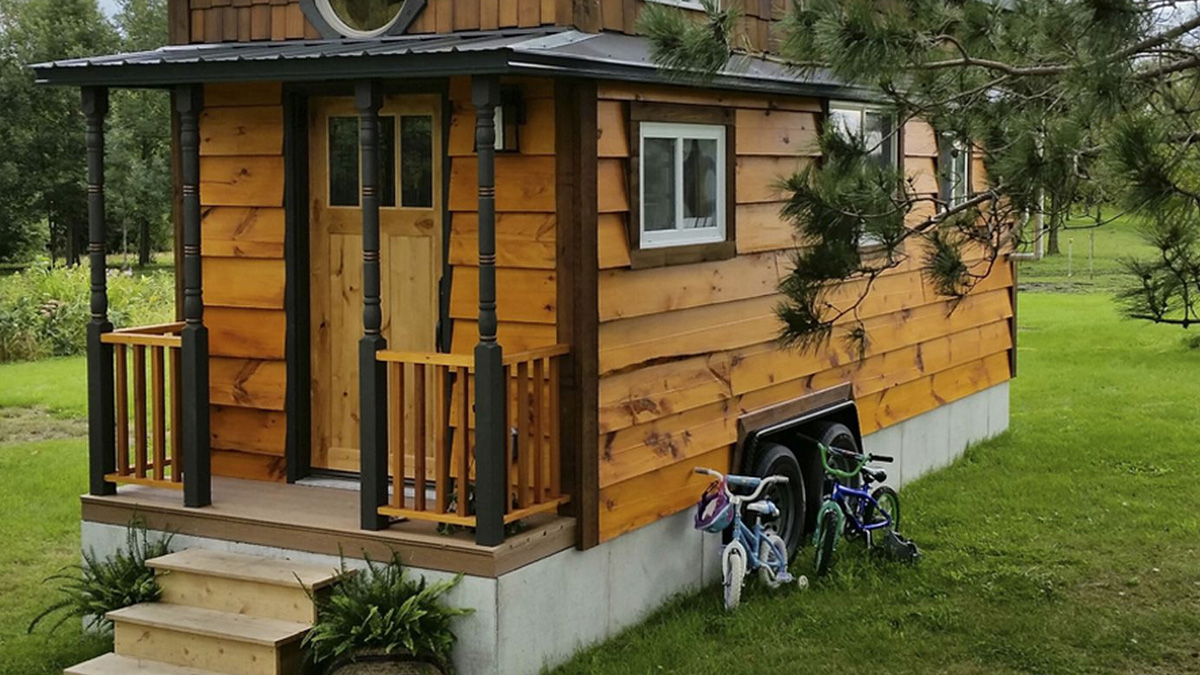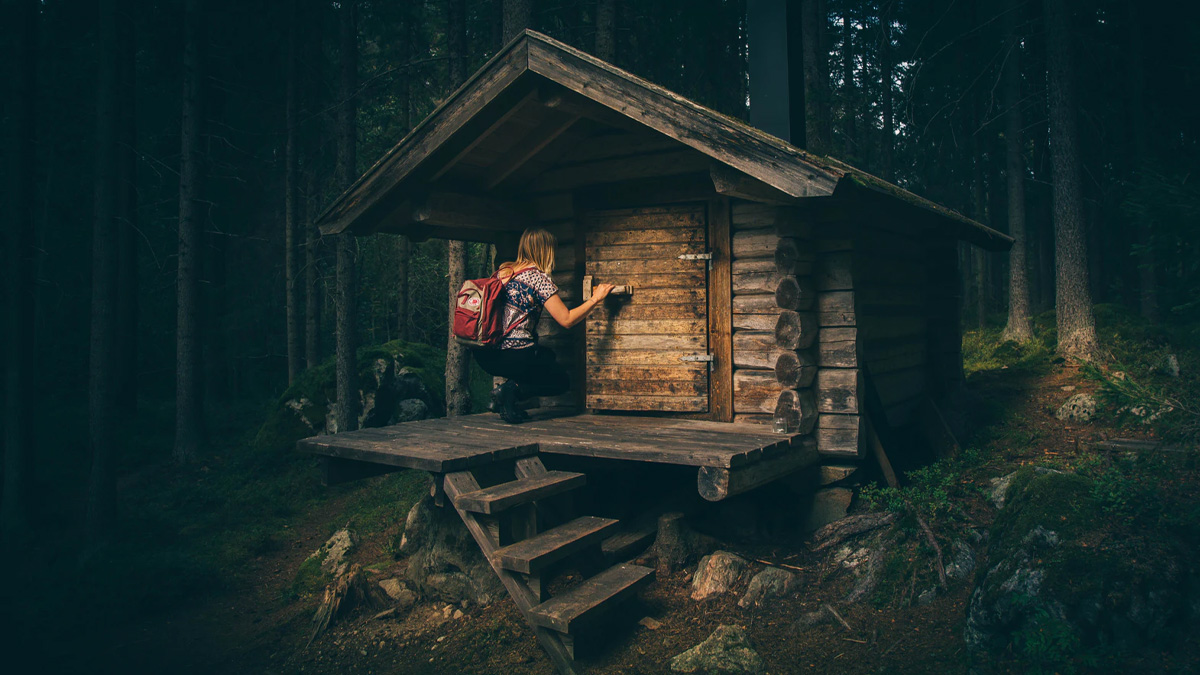on
Preparing for what might come, whatever that may be, is a balancing act; everything in moderation right? I like what Jack Spirko says about preparing “everything you do to prepare should help you today, not just in a disaster”. So whatever you do, should improve your life and situation now. Along with this, is enjoy the life you live now, don’t spend it worrying about what could happen later.
One of the things I see mentioned over and over in on-line forums is where do you find the space to put everything you might need. And unless you are particularly wealthy, the fact is you won’t find space for it “all” but you can be creative and find space for most of it.
That is where you can learn lessons from Tiny House living. Do to the limited space people who build and live in Tiny Homes have had to think out the spaces and the things in them. Can something do double or even triple duty. In a larger home, it is easy to overlook all the space you do have available.
Underbed storage
is one of the best places to put food with a long shelf-life. You can get beds with risers that lift up the whole bed, or simply get the long, low totes typically used for wrapping paper. You would be amazed at how much you can fit under a king-size bed in 6 of those totes and that is only one bed out of how many in your home?

Closet shelves
Most closets have a shelf above the clothes hanging rod. You can either hang another shelf above it or get a tower bookshelf or cubby and place it on your existing shelf. You now have a double-decker shelf and the cubbies will help you keep your things neatly stowed, and if you reinforce the shelf you can store buckets of freeze-dried food or cases of toilet paper on top in space that would otherwise be unused. If you are worried about anyone noticing what is on that top shelf you have a lot of options to block the view from cardboard painted to match the closet walls, to matching cloth to even creating an enclosed space with lightweight wooden pannels.
Cabinet tops
The tops of many cabinets are not flush-mounted with the ceiling. This means that there is typically 10-14 inch gap of space that is just begging to have something stored there. Dry goods, especially, will store very well in these areas. Line the cabinet tops with your canned foods in pretty 1/2 gallon glass mason jars and it will look like a decorative touch!
Or if you are handy, you can enclose that space with hidden touch latches and make it appear there is a soffit that drops to the top of the cabinets when in fact there is hidden storage there.
Deep Drawers

Drawers are a perfect place to store emergency medical supplies, tools, and even food. While you are not going to stock a years worth of food or water in a drawer it can hold more than you might think. Plus drawers make it easy to access your preps because you can slide it out and get a better view of the items hiding in the back.
And speaking of hiding items in the back, if you have a long deep drawer you can divide it, use the front 1/3 or 1/2 for everyday needs and tuck away emergency supplies in the back portion of the drawer. You can also install drawer glides that stop at a certain point, unless a button is pressed. If that is the point you put the divider in, you can make it apepar as if that were the end of the drawer.
Found space

Found space is about going through your belongings and clearing out the clutter. Fix, sell, donate or toss those things that no longer have meaning or usefulness to you. Sure you can save the outfit your child wore home from the hospital if you must, but you don’t need to save the clothes they out grew 6 years ago. Same with magazines and books, are they really something you are going to read again? Have your kids grown up or moved out – save a few beloved toys and donate or sell the rest. Movies you bought but have no intention of ever watching again? Organizing and eliminating things you no longer need can free up a tremendous amount of space both in your home and in your mind.
Outside options
Since food needs to be stored in a climate-controlled space, storing it outside your home really isn’t a good option. However other emergency supplies that are not temperature sensitive could be stored in a garage or storage shed. These would be tools, medical supplies, camping gear etc.
You could also rent off property storage, but generally speaking you want to keep your supplies close, rather than wondering if you will be able to get to their location in an extreme emergency.
Get access to premium content and more!
Two-way emergency communications
Cooking and baking on a woodstove





